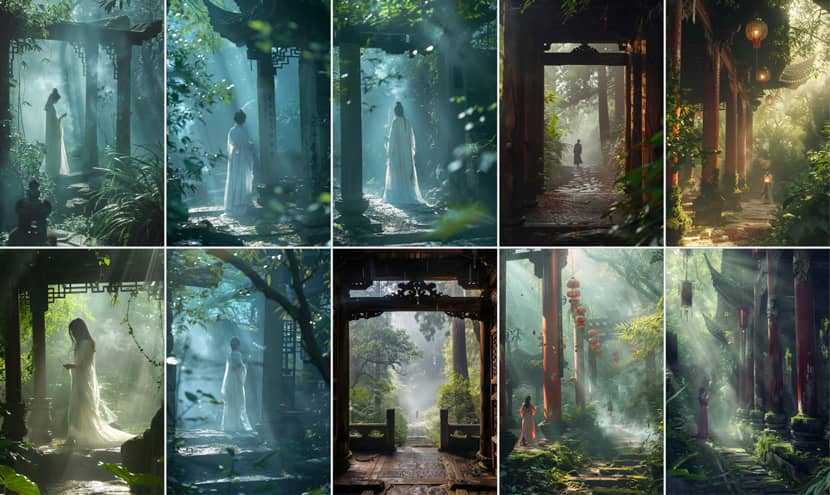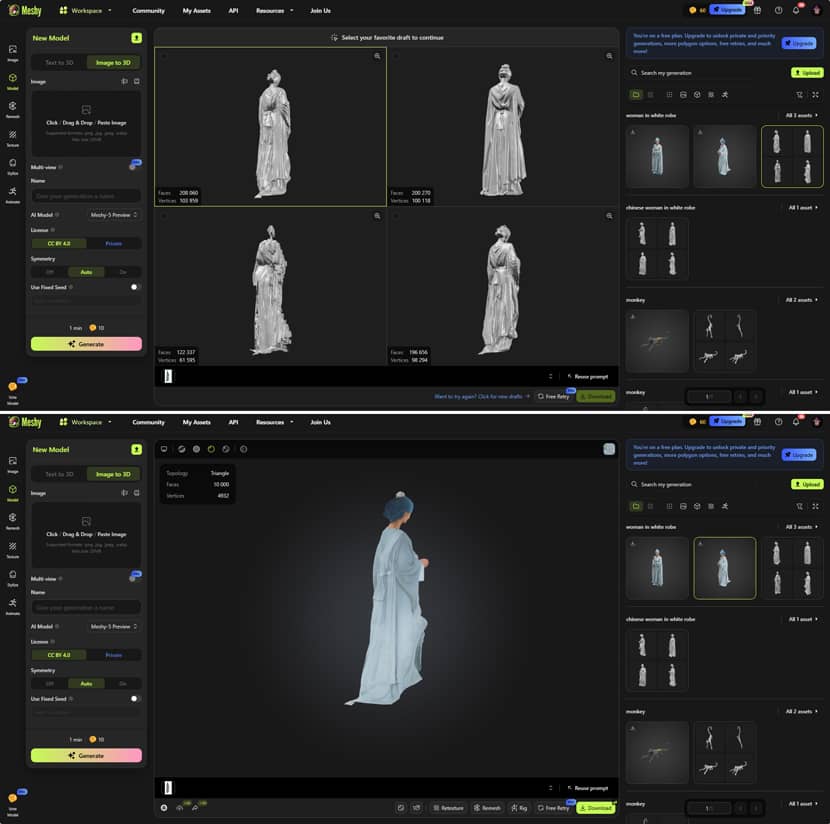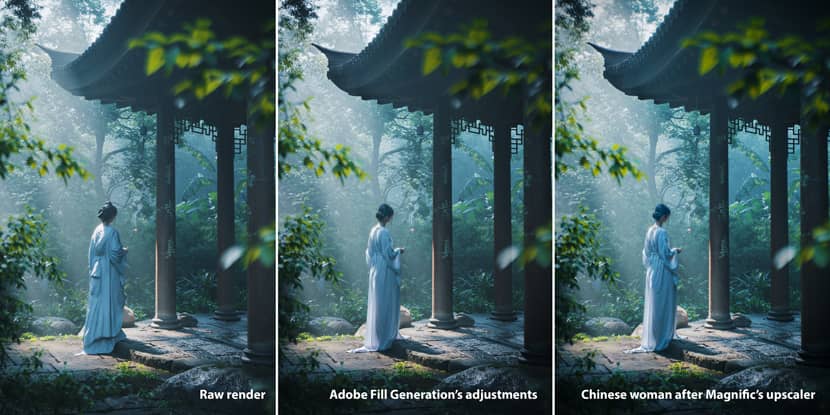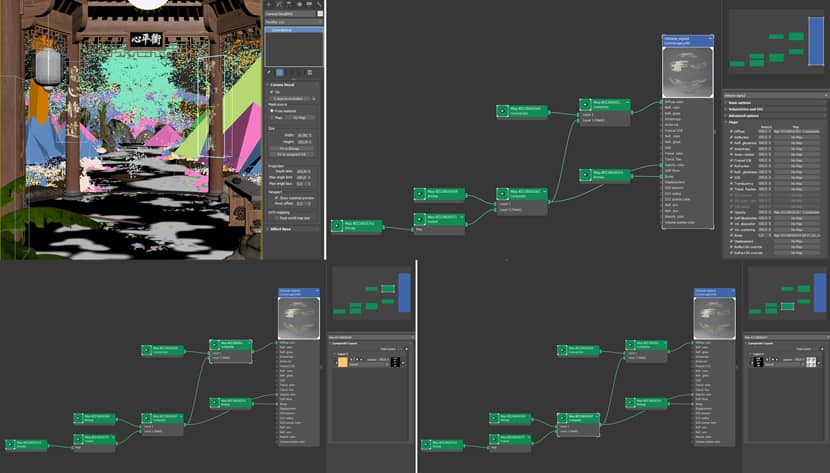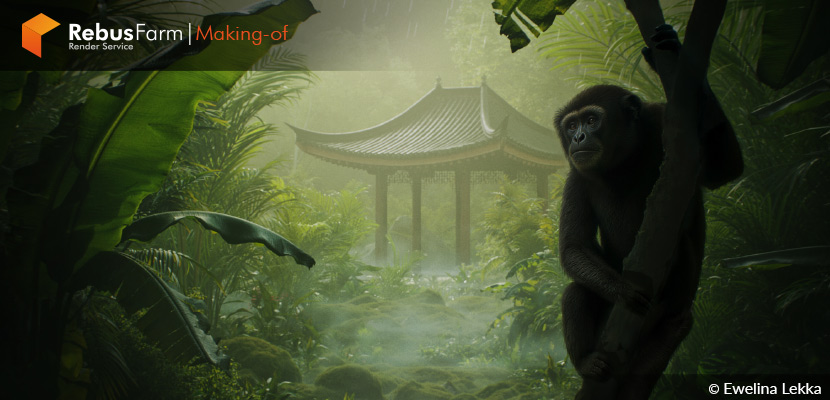
Blending ancient tradition with modern technology, this making-of feature takes us deep into the meditative world of "Within the Equilibrium" personal project by architect and CGI artist Ewelina Lekka. Inspired by the timeless serenity of traditional Chinese temples, Ewelina crafts a tranquil 3D environment where nature, architecture, and atmosphere exist in perfect balance. From AI-assisted character creation to cinematic fog techniques and cultural symbolism, every element contributes to a peaceful, reflective mood. Join us as we explore the creative journey behind this captivating digital sanctuary!
About me.
Hello 3D artists!
My name is Ewelina Lekka and I am an architect by profession and a 3D artist by passion. I am a self-taught 3D artist who strives to constantly hone my skills necessary to reach the highest level of quality. I possess extensive experience accumulated over many years and come from a vast professional background. I specialize in exterior and interior visualizations, but I found myself providing top-notch architectural visualizations with high-quality greenery and a rich environment.
About The Project.
"Within the Equilibrium" is a personal CGI project focused on creating a calm and peaceful space inspired by traditional Chinese temple architecture. The scene is set in an imagined jungle location, combining natural elements with stylized architectural forms to explore the idea of visual balance and inner stillness.
The project was developed as a space to experiment with the atmosphere, composition and power of artificial intelligence. I aimed to create a peaceful, self-contained world where every element — from fog and foliage to structural design — works together to support a quiet, reflective mood.
The concept blends influences from Chinese design, meditation spaces and cinematic world, resulting in a personal interpretation of serenity in 3D form.
I treat every personal project as an opportunity to constantly hone my skills and explore new methods and tools that the 3D world offers — and "Within the Equilibrium" was no exception. It allowed me to push my workflow further, especially in terms of storytelling. Particularly, I’ve been exploring the growing potential of AI tools and how they can enhance 3D visualization — from concept development to post-production. The rapid evolution of AI opens up new creative workflows and this project gave me a chance to experiment with its applications to improve both the quality and emotional impact of the final images.
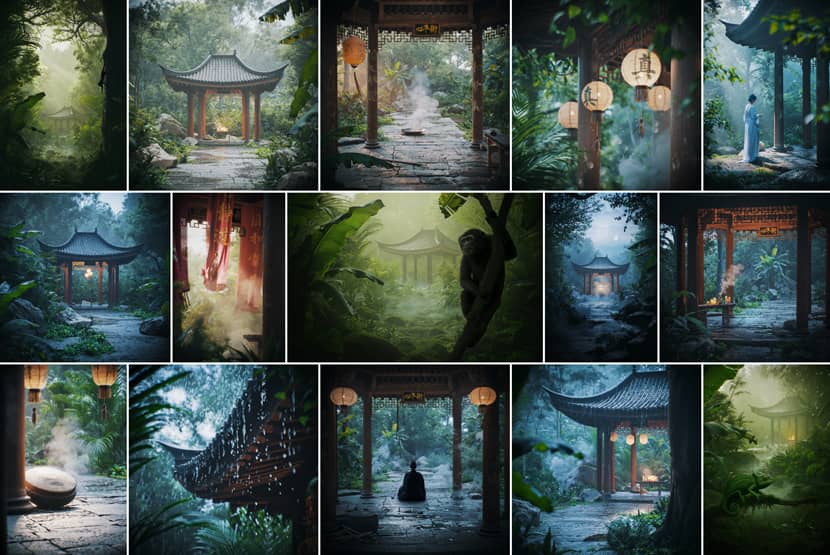
Software Used.
The entire concept was built fully in CGI using a combination of tools that allowed me to control both the technical and artistic aspects of the project. I used 3ds Max for modeling and scene assembly, Corona Renderer for lighting and rendering and Forest Pack for objects scattering.
Post-production was done in Photoshop, where I slightly fine-tuned the mood and adjusted tonal curves. Photoshop also helped with the initial character modifications before enhancing them further using Magnific AI.
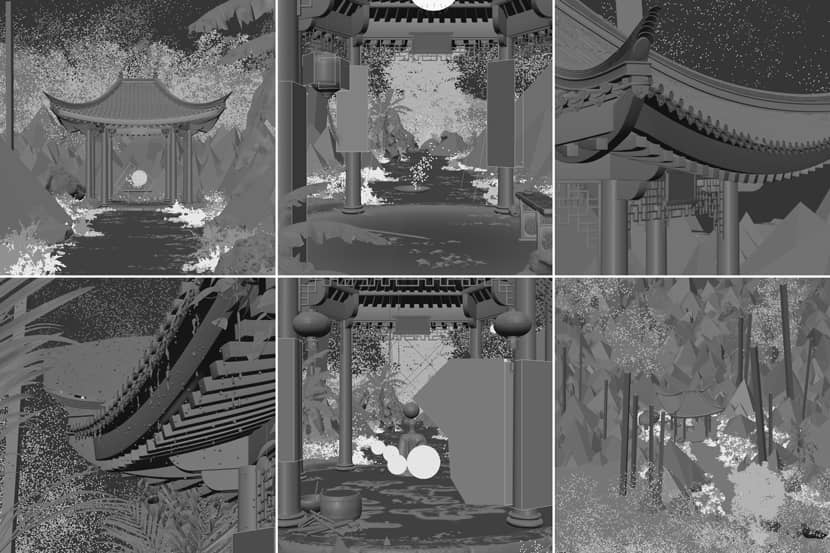
In addition, I incorporated several AI-based tools to support and expand the creative process — including Midjourney for early visual exploration, Meshy AI for mesh generation (used to create the 3D models of chameleon, monkeys and Chinese woman) and Magnific AI. Since I usually prefer to keep the overall look straight from 3ds Max, I used Magnific AI selectively — only to refine the quality of the mentioned characters and additionally ready to use a 3D model of a monk, without changing the rest parts of the renders.
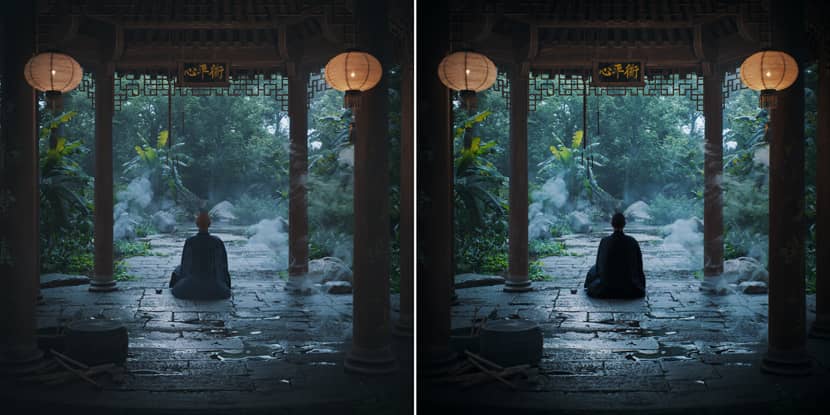
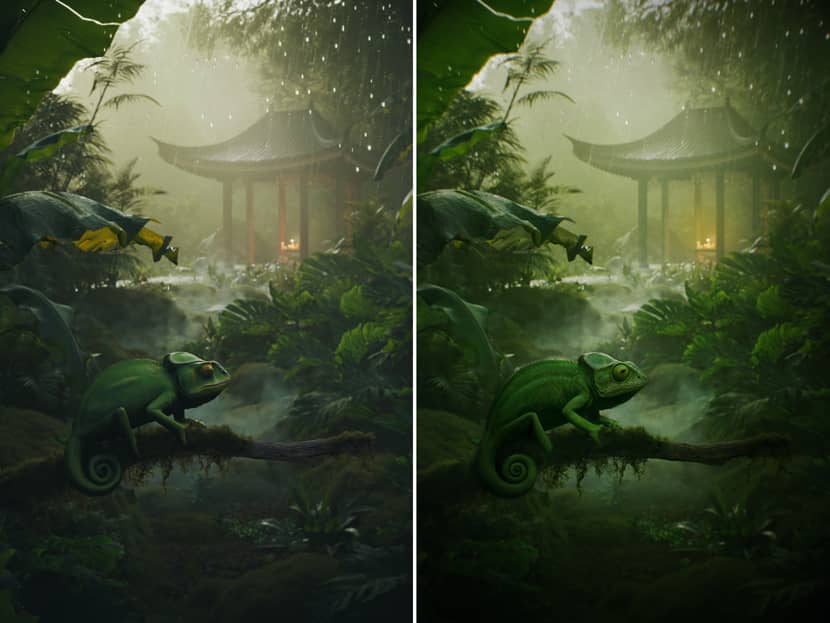
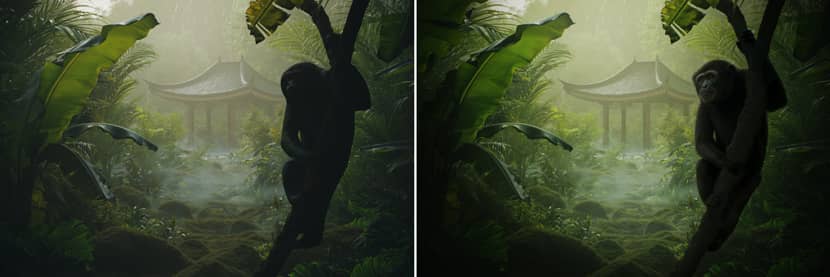
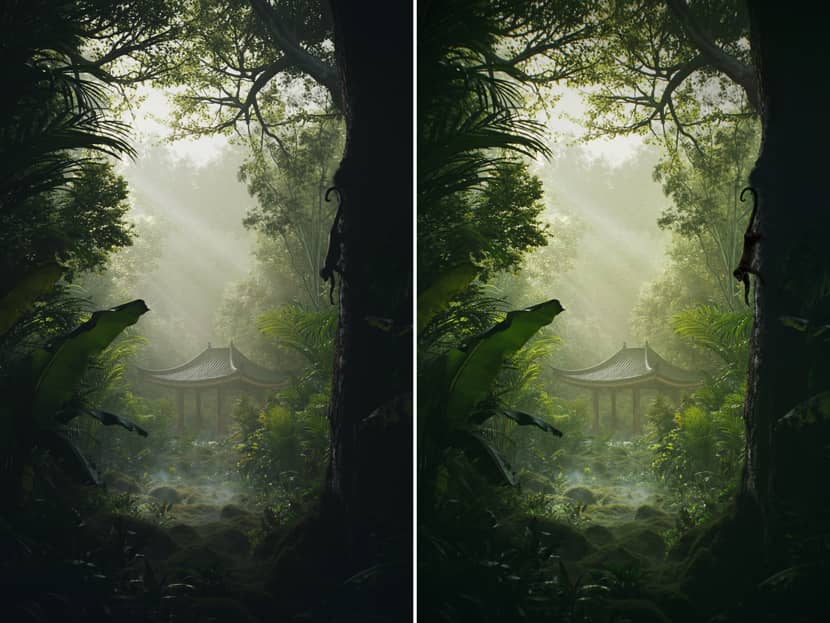
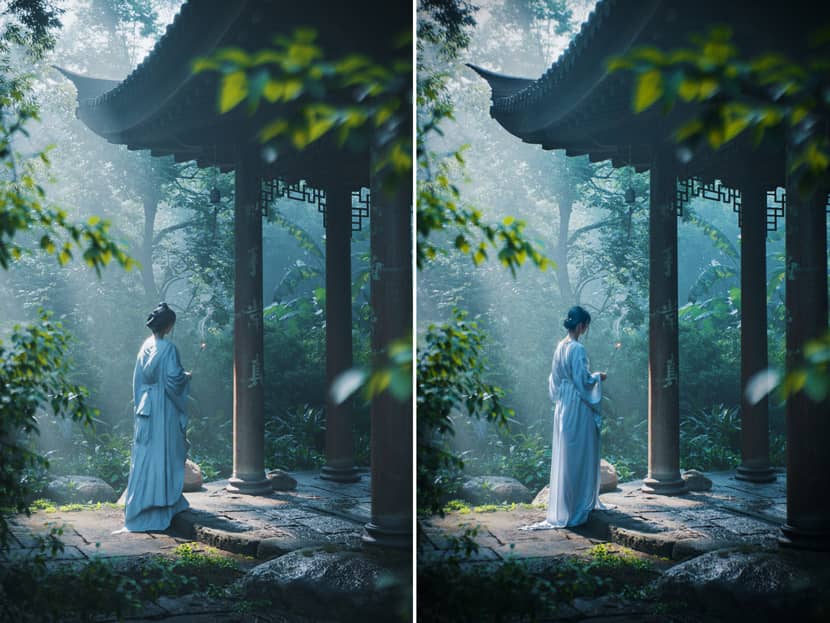
References.
As I mentioned earlier, the main inspiration came from classic, timeless Chinese temples. I was determined to capture the essence of that architecture as accurately as possible, so I spent many hours researching structural elements, decorative motifs and spatial compositions that are characteristic of traditional Chinese design.
When it comes to atmosphere and mood, I took a lot of inspiration from a collection of AI-generated images created with Midjourney. It’s a powerful tool that allows you to push your creative thinking and unlock new ideas quickly. I find it especially useful in the early concept phase, where mood and visual storytelling start to take shape.
Below you can find some of the references that helped guide the look and feel of this project:
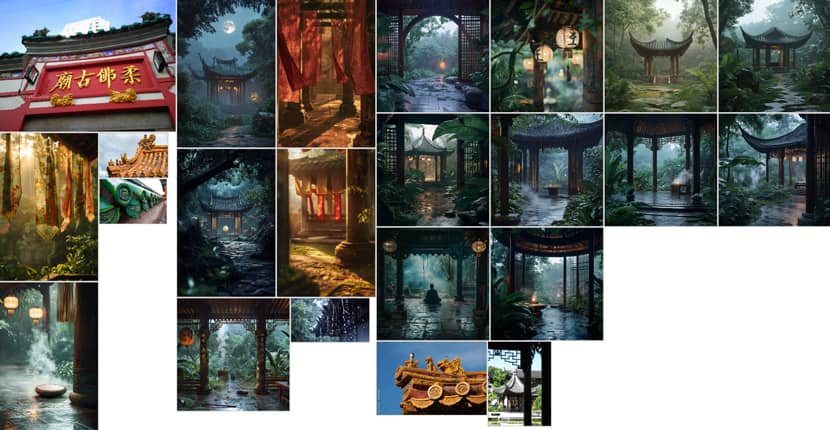
Composition.
While developing each scene, I paid particular attention to composition — to guide the viewer's eye and enhance the narrative. I approached every frame as if it were a photograph or a still from a film, carefully positioning elements to create visual harmony and depth. I also relied on classical composition rules such as the rule of thirds, golden ratio and symmetry — especially in shots where balance and calm were part of the message. Script like Image Comp Helper supported this process, helping me refine each scene’s structure with precision.
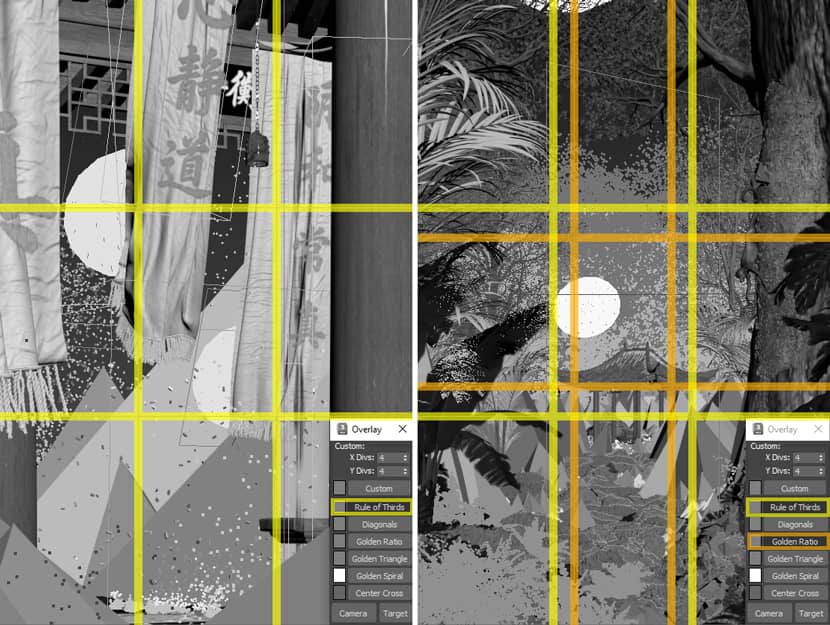
Working with AI Tools: Meshy AI, Adobe Photoshop Fill Generation & Magnific AI.
One of the most interesting parts of this project was exploring how AI can assist not just in the inspiration part, but also directly in asset creation. I used Meshy AI, a generative 3D tool, to quickly convert reference images into usable base meshes. This approach significantly accelerated the modeling process for organic elements that would otherwise be time-consuming to sculpt manually.
I used Meshy AI to create four key assets: the chameleon, the two monkeys and the Chinese woman character. For each of them, I started with a rough image prompt and let Meshy generate the initial geometry. The outputs weren’t production-ready by default, but they provided a solid foundation that saved a lot of time and allowed me to focus on refining form and expression instead of starting from scratch.
Let me break down the process in more detail using the Chinese woman as an example, as she perfectly illustrates how AI assists in a creative 3D pipeline.
The first step was asking ChatGPT for a well-crafted and accurate prompt to help me generate a wide range of consistent references in Midjourney. These references served a dual purpose: they provided both visual inspiration for building a storytelling shot and a solid base image for generating geometry through Meshy AI.
Then, after selecting one reference image from the batch, I first upscaled the region using Magnific AI to enhance the visual quality and make it easier for Meshy AI to extract more detailed geometry in the next step. After that, I made a few quick adjustments in Photoshop to properly prepare an image for the AI tool — including cutting out the character, replacing the background with solid white and removing unnecessary highlights on clothing, skin and hair that could potentially cause unwanted illumination or artifacts in the next stage.
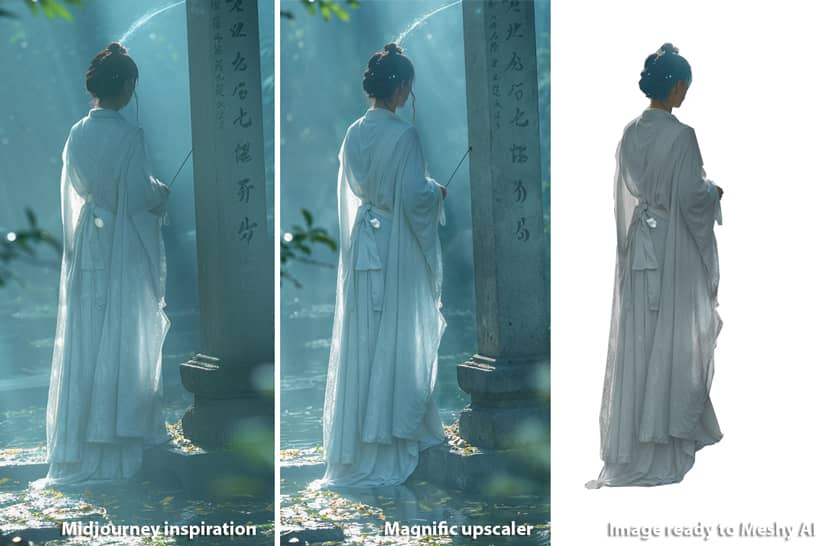
I simply dragged and dropped the image into Meshy AI and within a few seconds it generated four different 3D mesh options to choose from. I eventually went with the one that most closely resembled the original 2D reference.
As you can see below — it looked pretty strange at first :) But it was still good enough to use as a base model that I could enhance and refine later in the next steps.
The rest of the process was fairly straightforward as well. After generating the textures and downloading the model in FBX format, I simply adjusted the materials to make them compatible with Corona Renderer. Once rendered, the final touches — the real "magic" — were done using Photoshop and Magnific AI to enhance the overall look and feel of the character.
This included adjustments by using Photoshop’s Fill Generation feature. These adjustments refer to the fabric material to make it appear more delicate, silky and flowing, as well as subtle tweaks to the overall posture of the Chinese woman. After that, I processed the image through Magnific AI to enhance the character's details.
What I found most useful was how much time it saved me in preparing complex 3D models that would otherwise be extremely challenging and time-consuming to create with high precision from scratch.
Instead of spending hours sculpting and refining every detail manually, Meshy provided me with a solid starting point that I could further refine and adapt to fit the scene.
At this stage, it’s worth mentioning the latest Common Point Masterclass, packed with 3D tips that truly inspired me to combine 3D and AI more effectively.
Building Atmosphere & Shaping the Mood.
I believe that the process of building atmosphere, shaping the mood and adding fog effects also deserves a bit of spotlight, as these elements played an integral role in reinforcing the storytelling and making the scene more emotionally engaging.
I’m sure most readers have used Volume Material at least once — so it won’t come as a surprise that I applied it in my scene as well. However, I’d like to highlight a few specific fog tricks that can really take the atmosphere to the next level.
While working on this project, I came across a fantastic tutorial from VizAcademy on how to create realistic ground-level fog. That was exactly what I needed! It’s a shame I didn’t know about this method earlier — using a simple box or any needed shape with Volume Material combined with a Corona Distance Material and a smoke bitmap — but hey, better late than never :) I implemented it right away and it made a noticeable difference in mood and depth.
This method was applied in two shots: one featuring the chameleon and the other with the monkey on a branch:
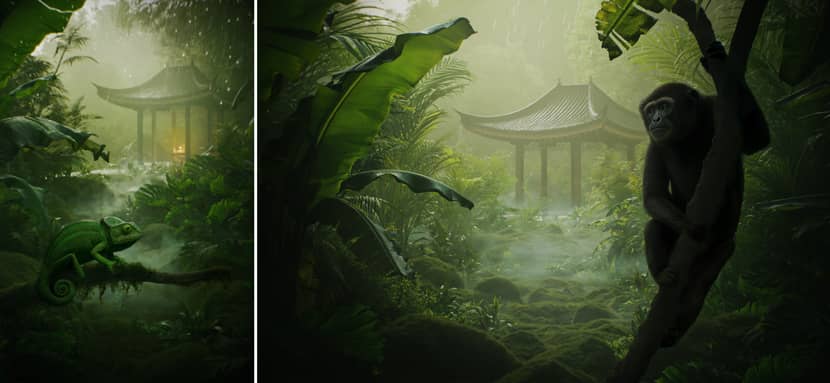
Finally, I’d like to give a quick mention to another handy feature — Volume Grid. With the right VDB assets, you can bring an unexpected level of engagement to your scene. It’s definitely more powerful than it might seem at first glance.
In this project, I used several VDBs, such as subtle ground fog and steam to enrich the background and add extra realism to the candles and incense. These elements helped build a stronger cinematic feel. Just a few well-placed volumes can completely shift the emotional tone of a scene.
The VDB assets I used came from these sources:
For those who haven’t heard of this VDB effect yet, I highly recommend this tutorial for a better understanding. It walks you through each step and explains all the key parameters and variations of the effect.
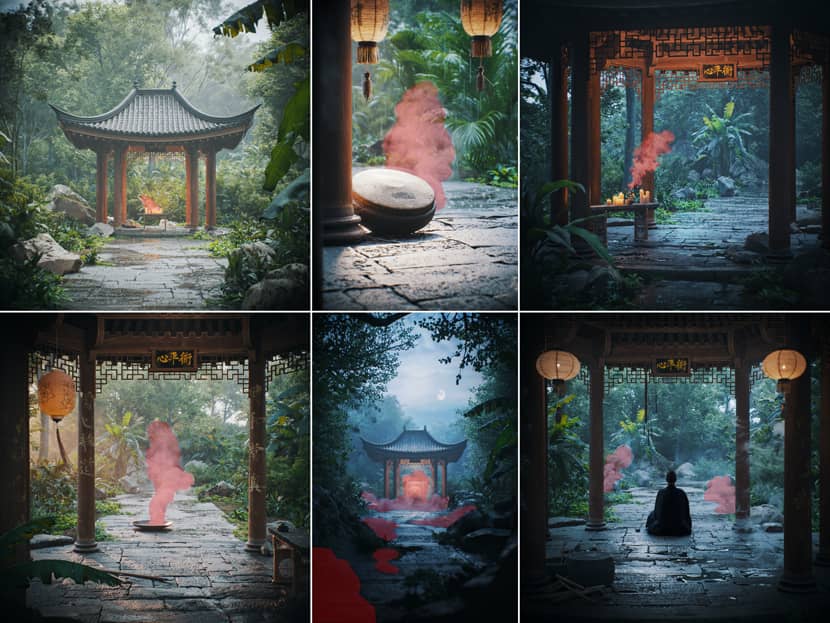
Chinese Calligraphy: A Deeper Cultural Narrative.
One of the subtle yet deeply meaningful elements I incorporated into this project was traditional Chinese calligraphy. Wanting the entire scene to feel as authentic as possible, I made the effort to include real characters rooted in classical Chinese script. This decision was driven by my respect for cultural context and my desire to reinforce the spiritual atmosphere of the temple.
Choosing the right characters was a significant part. I didn’t want to randomly select signs based on aesthetic value alone. From the very beginning, I aimed for every element in this project to be chosen consciously and to carry a deeper meaning — including the calligraphy. I turned to AI — specifically ChatGPT — as a research assistant, helping me explore signs related to balance, inner peace and harmony in Chinese philosophy. Without this kind of support, it would’ve taken me significantly longer to identify appropriate phrases and verify their meaning and cultural alignment.
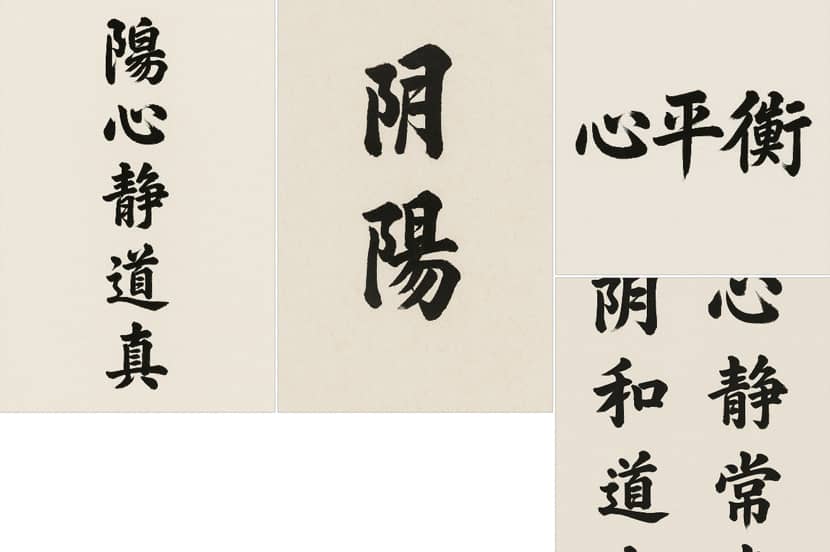
To integrate the calligraphy into the 3D scene, I used the powerful Corona Decal feature — a versatile tool in Corona Renderer that allowed me to apply the characters directly onto the columns, maintaining realistic shading and surface interaction. This gave the impression of hand-painted brushwork, without the need to rely on complex shaders or post-production overlays.
In the end, the presence of carefully selected and realistically applied Chinese calligraphy brought a symbolic layer to the project — grounding the temple in a deeper cultural narrative while subtly enhancing its meditative tone.

Post-production.
Apart from the previously mentioned enhancements made to the characters in 3D, the post-production process mainly involved subtle color corrections, fine-tuning curves and balancing the highlights and shadows in Camera Raw. The vintage look was achieved by applying a subtle Lens Correction filter and adding a noise layer directly in Photoshop. These delicate adjustments helped to tie together the overall mood and ensure a cohesive and cinematic look across all the final images without over-processing the renders.
Final Images.
Below you can watch all the final images of my personal project "Within The Equilibrium".
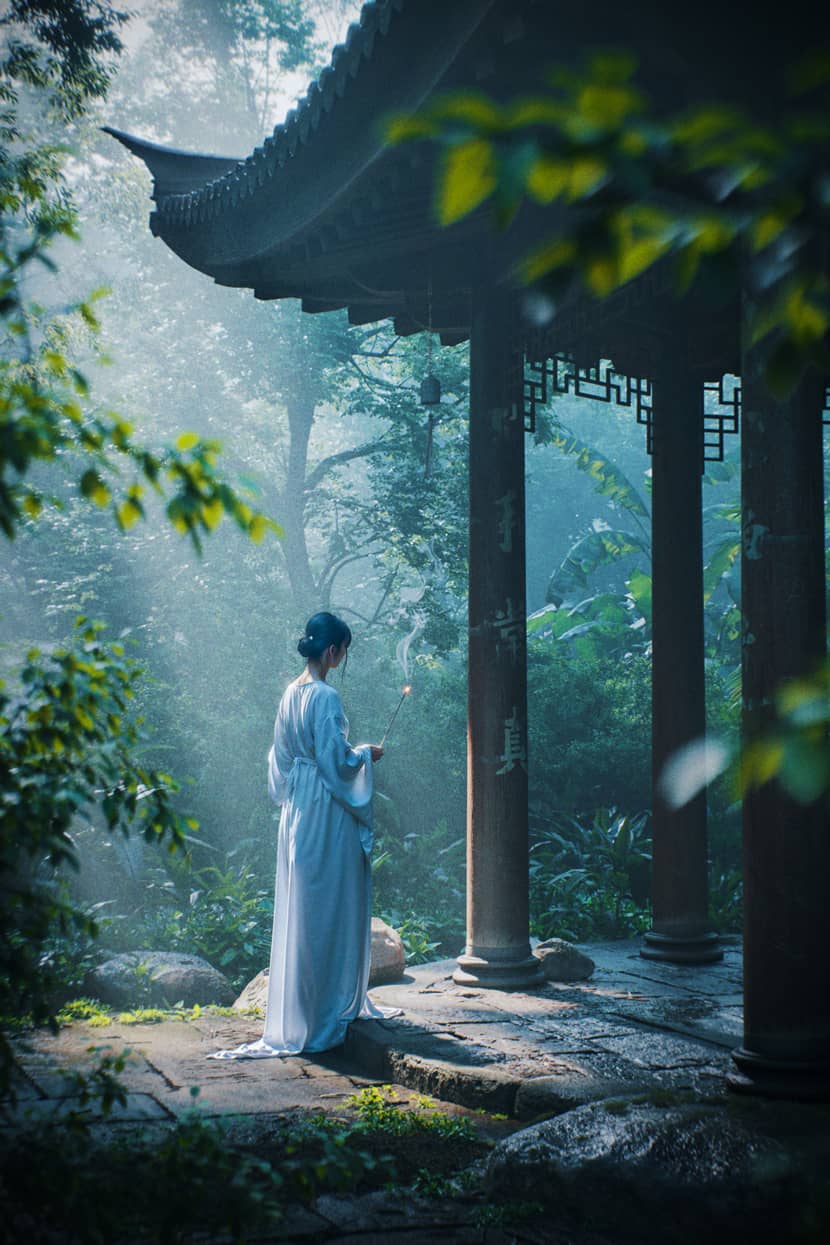
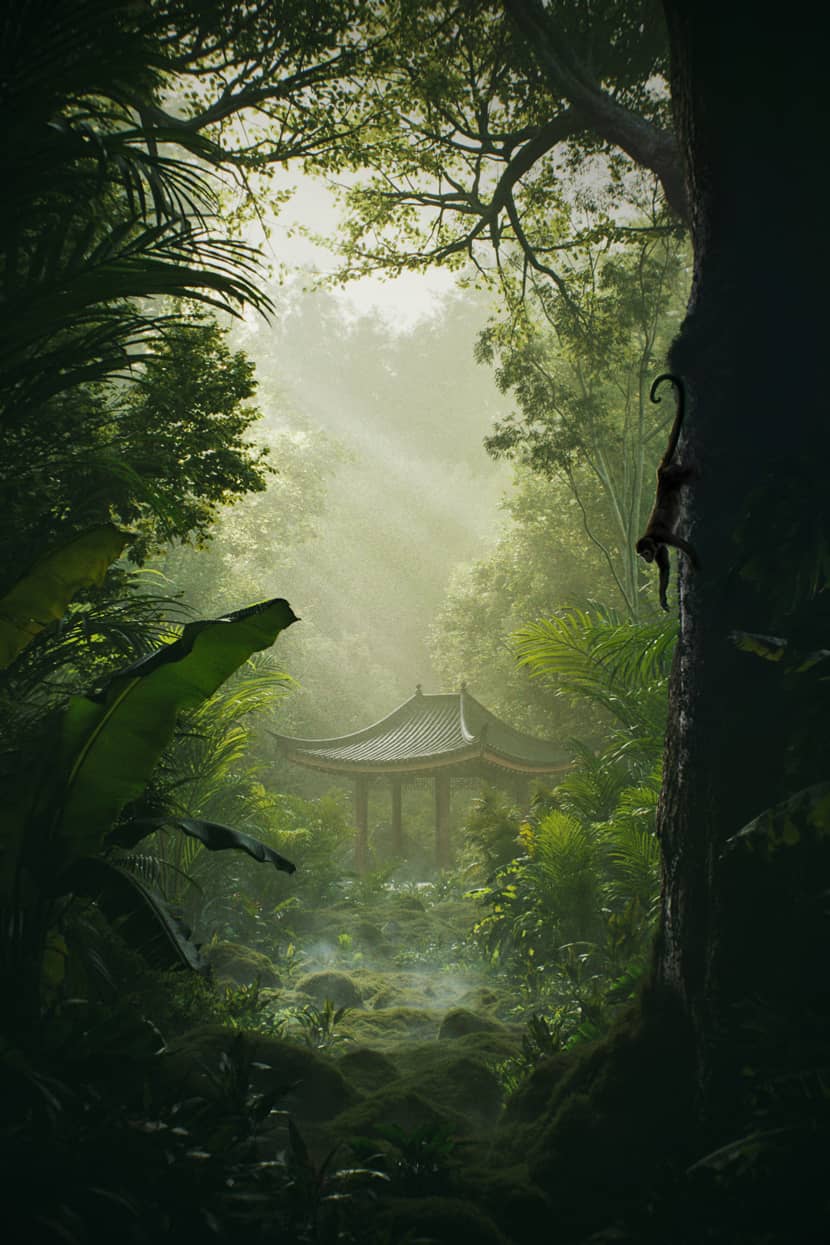
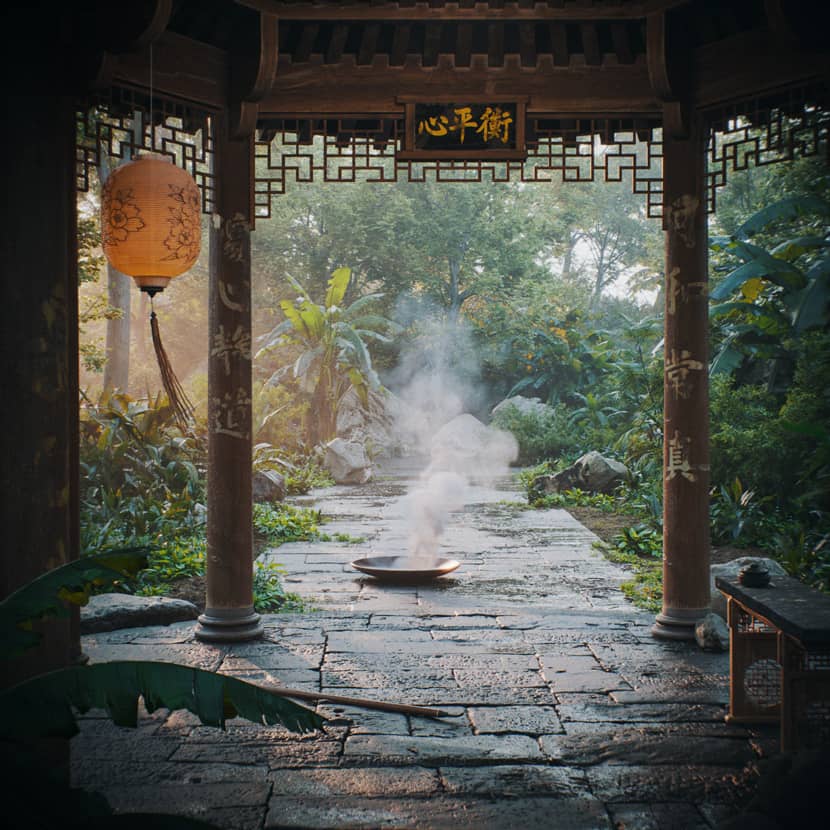
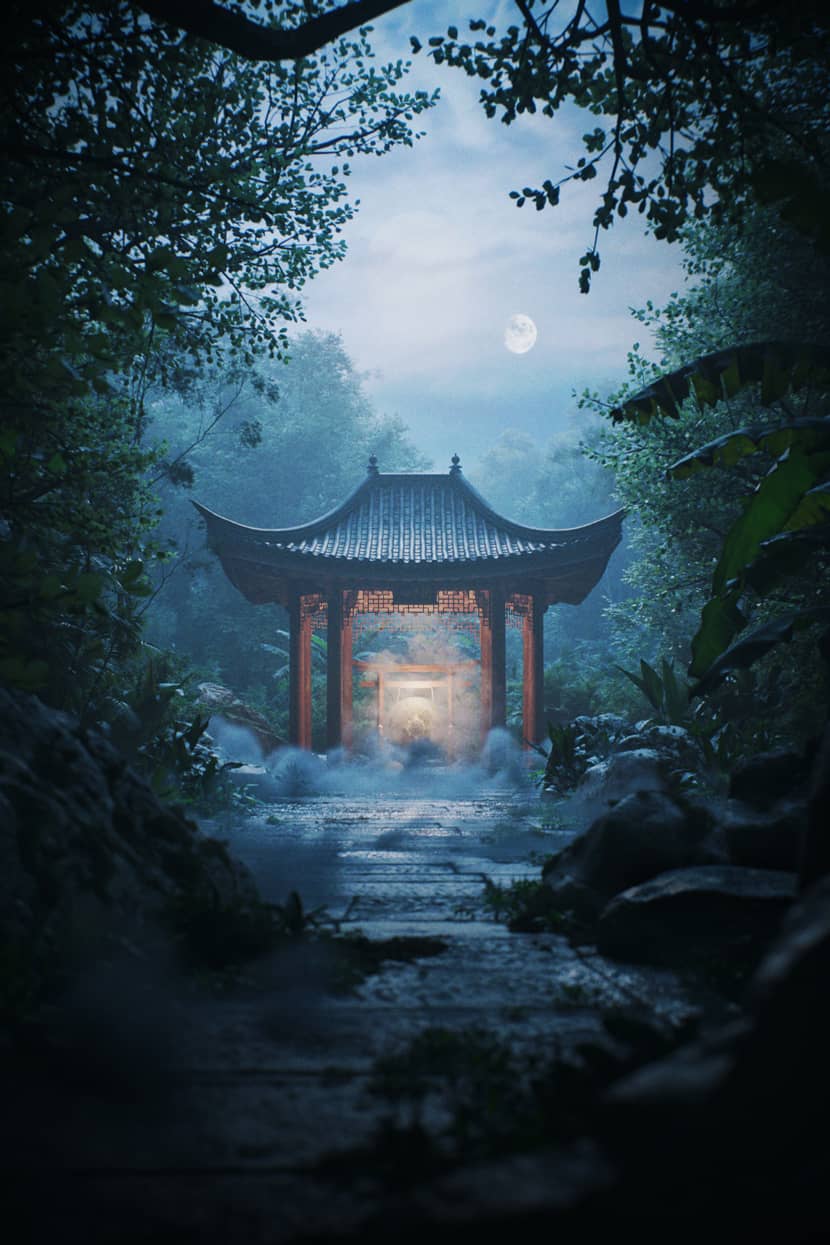
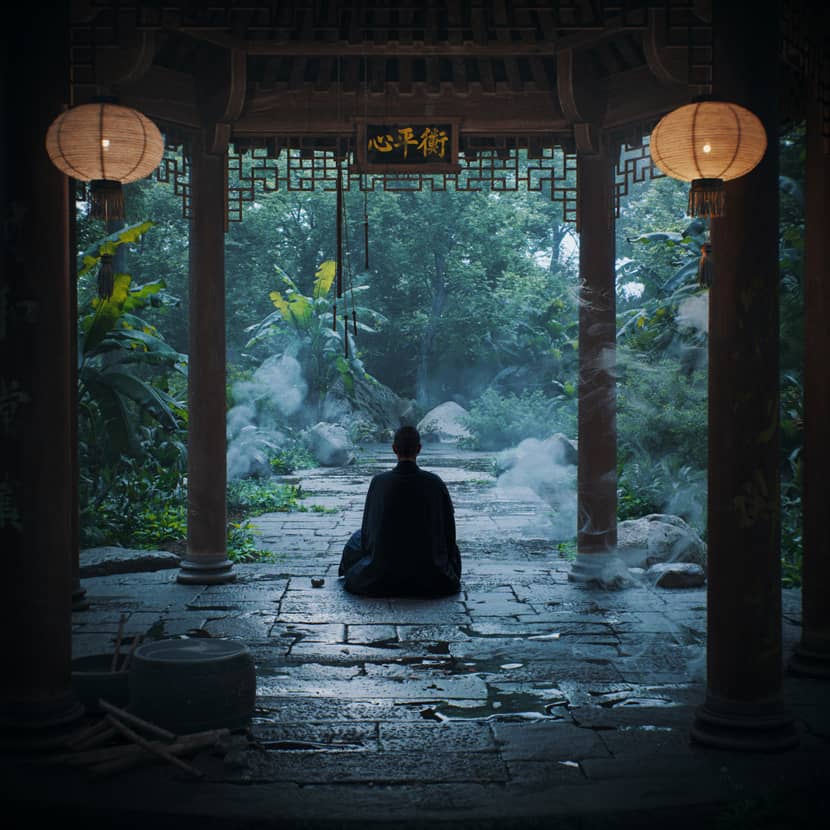
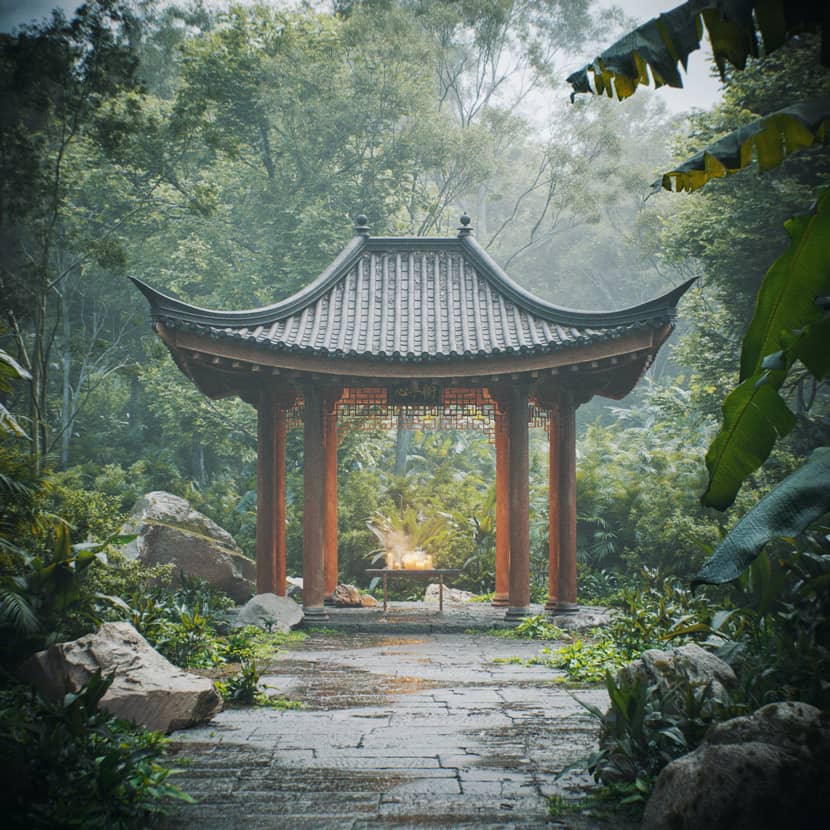
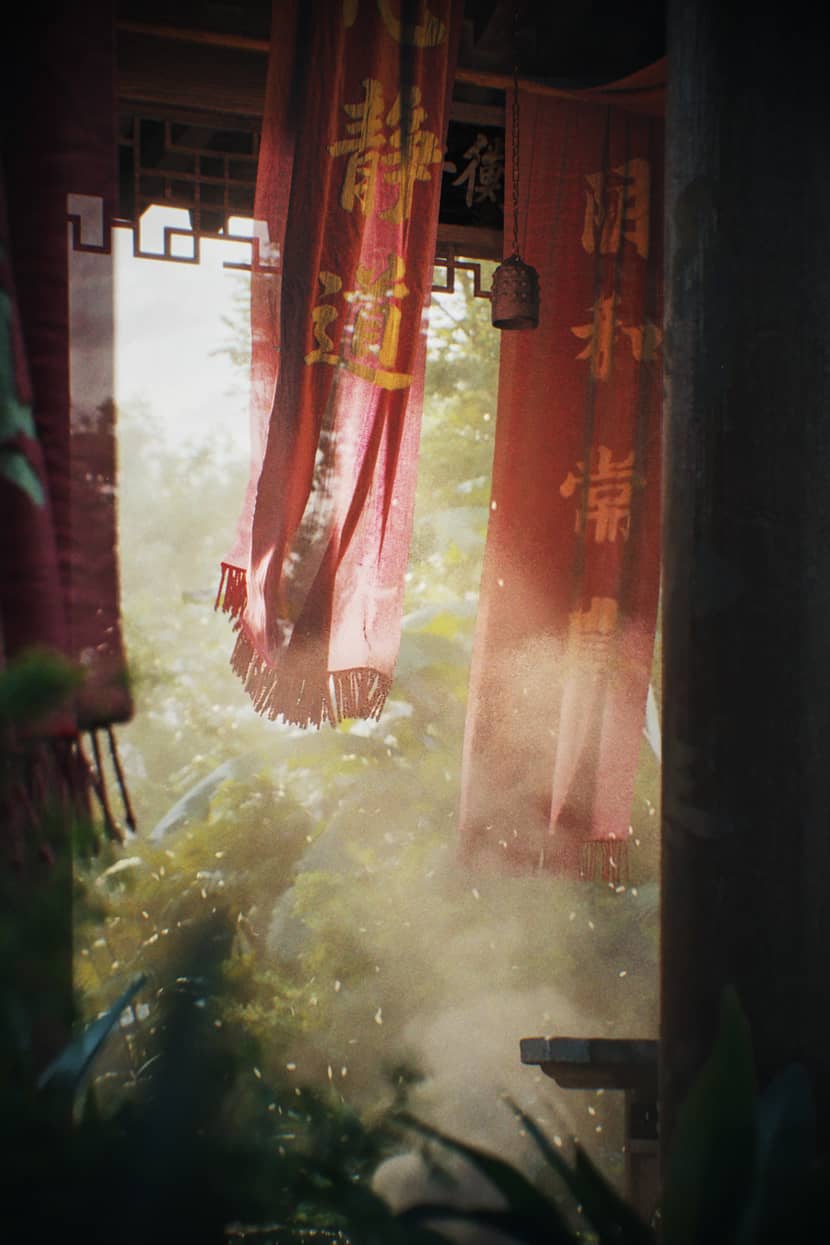
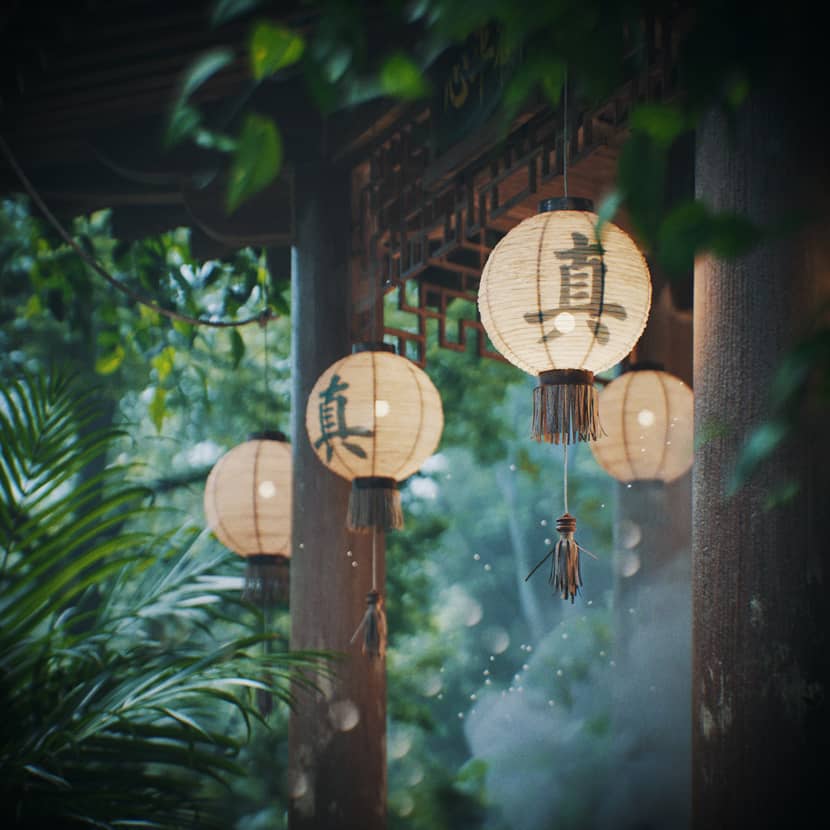
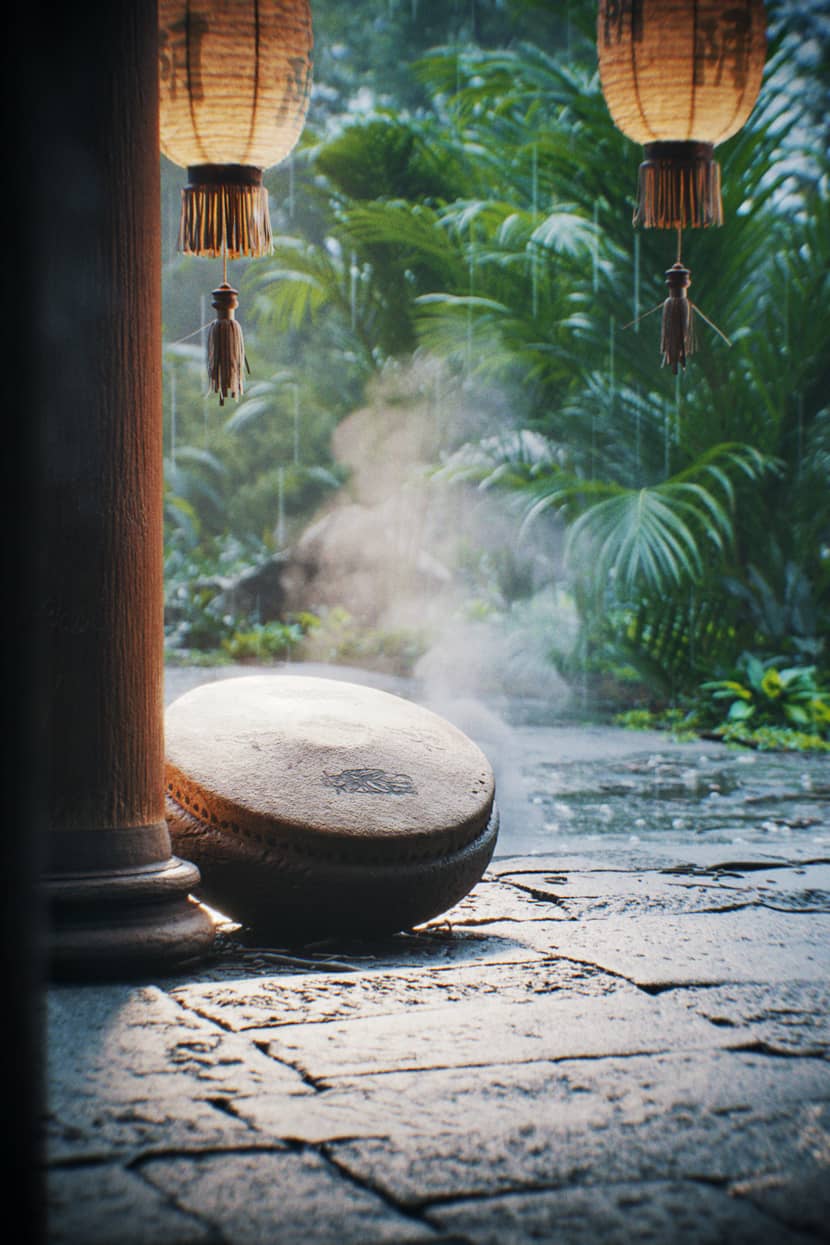
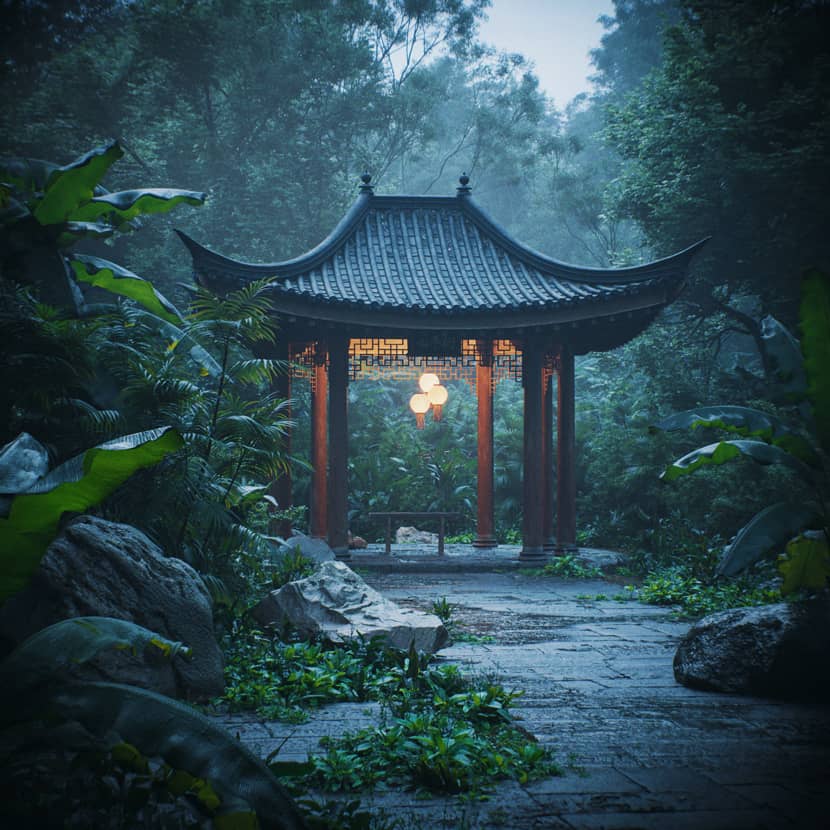
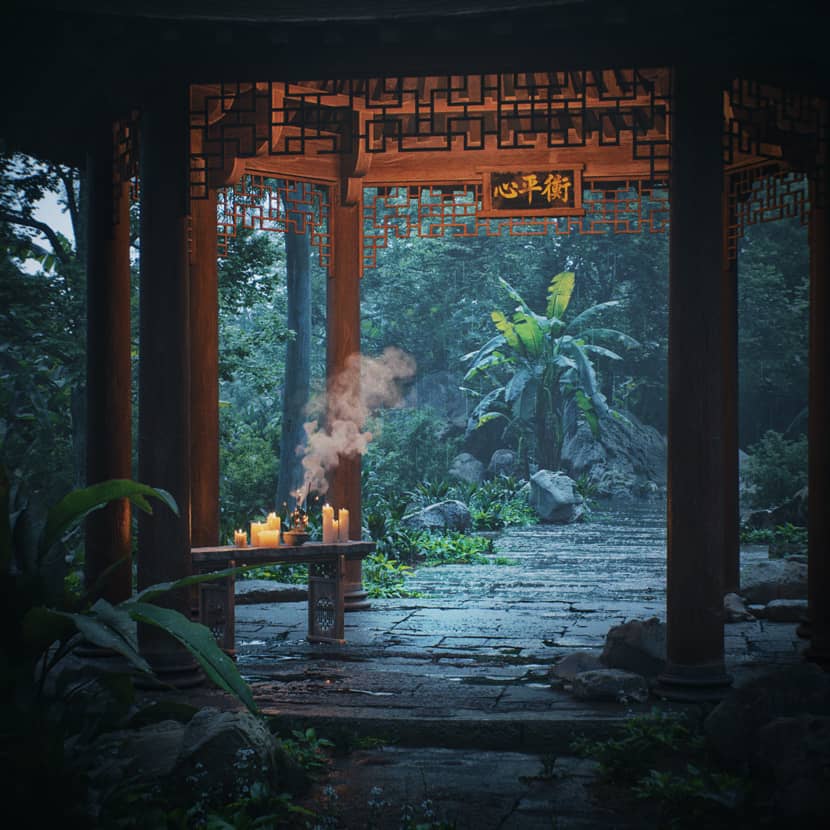
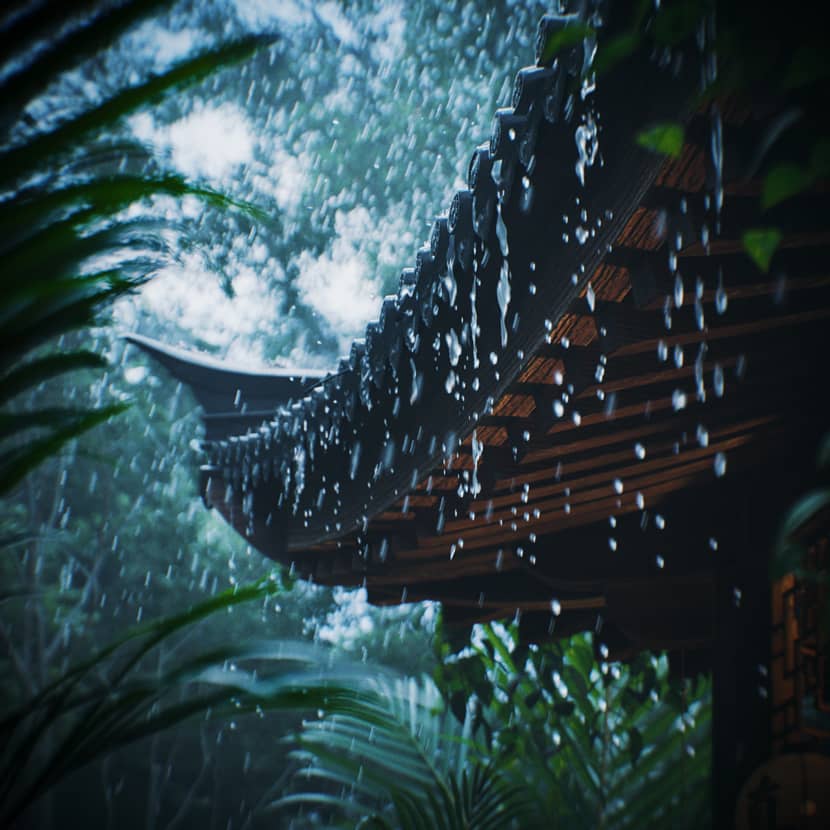
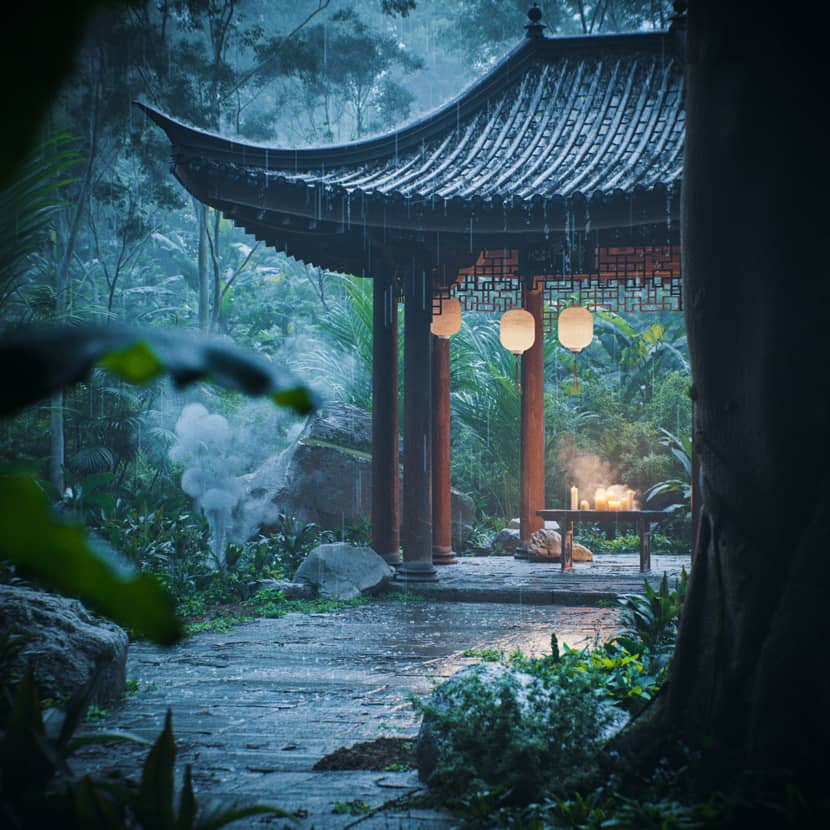
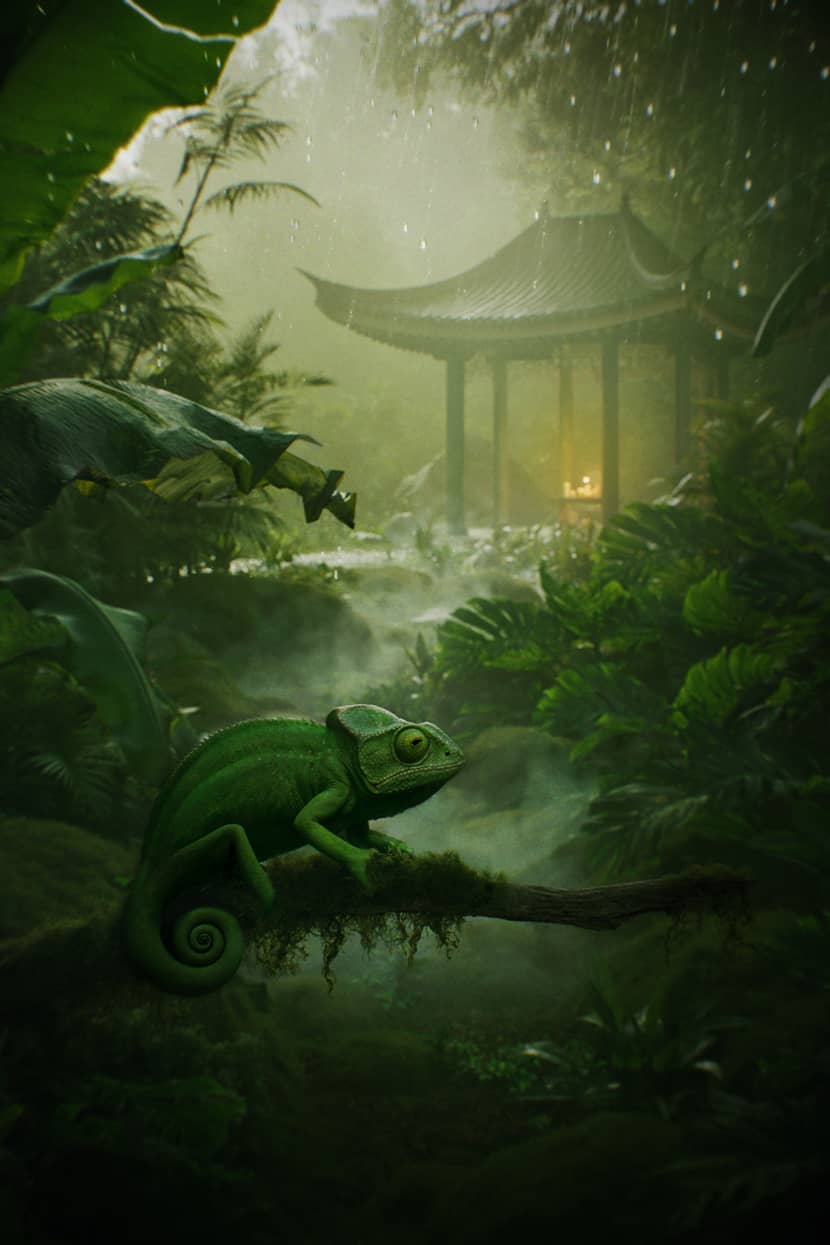
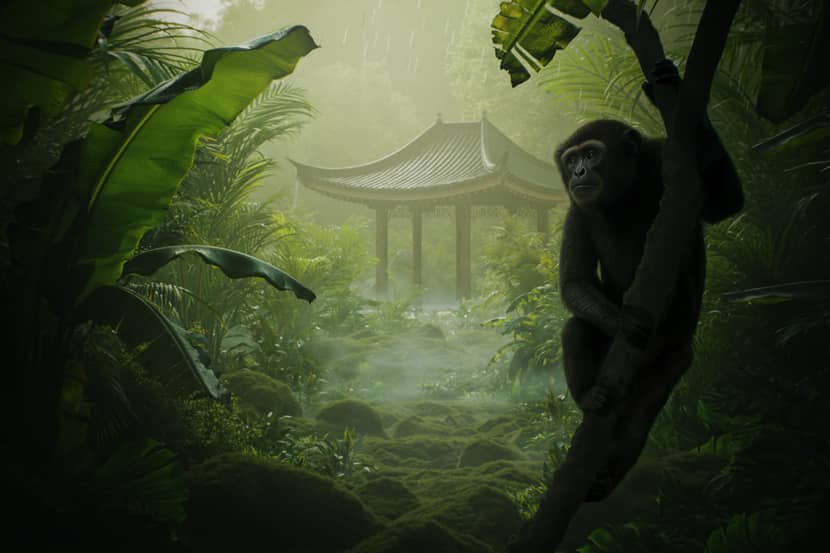
Words of Thanks.
Thank you very much for taking the time to read my article. I hope that everyone finds at least one useful tip, insight or idea that resonates and can be applied or adapted to enhance their own creative workflow.
I’m deeply grateful to VWArtclub and RebusFarm for the kind invitation to share my experiences. It’s been a true pleasure to reflect on this personal project and share some of the tools and techniques that helped bring it to life.
I’m excited to see how fellow artists keep evolving in the world of CGI and digital art. Let’s inspire each other!
Ewelina Lekka.
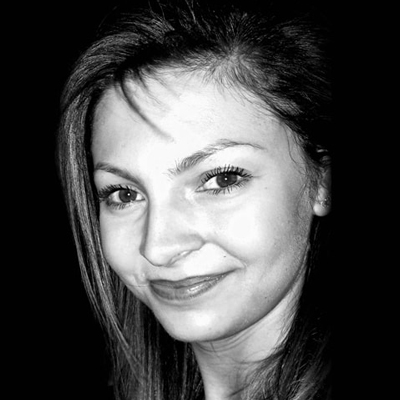
About the artist
Ewelina Lekka is a professionally trained architect and self-taught 3D artist with a deep passion for digital storytelling. With years of experience in both architecture and visualization, she specializes in crafting high-end exterior and interior renders enriched with detailed greenery and immersive environments. Ewelina constantly seeks to refine her skills and explore new technologies, including the creative integration of AI tools into her workflow. Her work reflects a harmonious blend of technical precision and artistic sensitivity, often drawing inspiration from cultural and natural themes.

